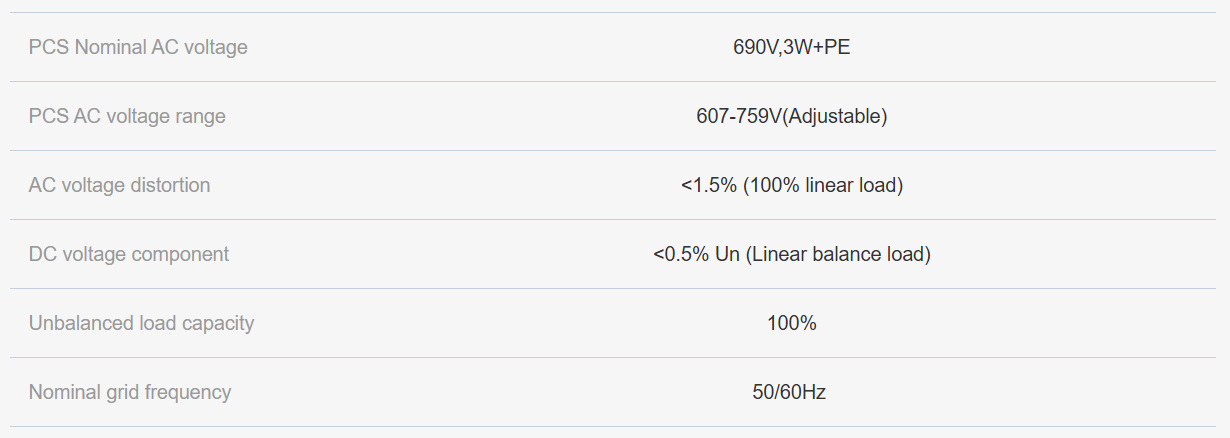| Brand | RW Energy |
| Model NO. | Turnkey Station With MV Transformer Integrated (Central PCS, 1500V) |
| Max.Efficiency | 99% |
| AC output power | 3450kVA |
| Max. DC voltage | 1500V |
| Max. DC current | 1403A |
| Max. AC output current | 1046A |
| Series | Power Conversion System |
Features
PCS Max. efficiency up to 99%.
Full reactive power four-quadrant capability.
IP65 protection for PCS, IP54 for MV station.
Black start ability.
Support VSG function.
Millisecond-level Power response to EMS/SCADA.
Two DC branch inputs.
Designed for frozen scenario with -40℃ option.
DC Parameters:

AC parameters (On-Grid):

AC parameters (Off-Grid):

General data:

Transformer:

The working principle of a turnkey station with an integrated MV transformer?
High-Voltage Incoming Line
Receiving Electrical Energy: High-voltage transmission lines deliver electrical energy to the high-voltage side of the turnkey station.
Protection and Control: High-voltage circuit breakers and disconnect switches are used to control the on-off of electrical energy, and lightning arresters are used to protect the equipment from lightning strikes and overvoltages.
Medium-Voltage Transformer
Voltage Conversion: The medium-voltage transformer converts high-voltage electrical energy (such as 110 kV, 35 kV) into medium-voltage electrical energy (such as 10 kV, 20 kV).
Cooling System: The transformer generates heat during operation, and the cooling system (such as oil cooling, air cooling) ensures that the transformer operates within a safe temperature range.
Protection Devices: The transformer is equipped with various protection devices, such as overload protection, short-circuit protection, temperature protection, etc., to ensure the safe operation of the transformer.
Medium-Voltage Outgoing Line
Electrical Energy Distribution: Medium-voltage electrical energy is distributed to end users or the next-level distribution system through medium-voltage circuit breakers and disconnect switches.
Protection and Control: Medium-voltage circuit breakers are used to control the on-off of electrical energy, and disconnect switches are used for safe isolation during maintenance.
Control and Protection System
Monitoring: Relay protection devices and SCADA systems monitor the running state of the system in real time, including parameters such as voltage, current, and temperature.
Protection: Relay protection devices quickly cut off the power supply when detecting abnormal situations (such as short-circuit, overload, overvoltage), protecting the safety of equipment and personnel.
Automation Control: PLC controllers achieve automation control, automatically adjusting the running state of the system according to preset logic and parameters.
Auxiliary Systems
Cooling System: Ensure the normal operation of transformers and other equipment in a high-temperature environment.
Ventilation System: Provide a good ventilation environment to prevent equipment from overheating.
Lighting System: Provide sufficient lighting to facilitate operation and maintenance.
Security System: Include video surveillance, intrusion alarm, etc., to ensure the safety of the station.






